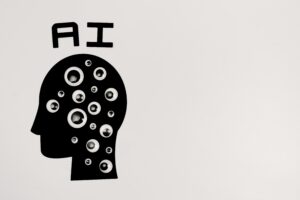The SAG-AFTRA actors strike: Figuring out how AI and image rights fit together
Table of Contents
Welcome to our piece about the recent strike by SAG-AFTRA players and how it is related to the rising impact of artificial intelligence (AI) on image rights.
In this in-depth article, we look at the root problems, the worries of the actors, and how AI-generated material is changing.
Join us as we talk about the complexities of AI and picture rights and explain what they mean for artists and the entertainment business as a whole.
Protecting Image Rights: The Actors’ Strike and the Effects of AI
The SAG-AFTRA actors are on strike because they want to protect their image rights in a time when AI is getting better.
As AI gets better, people are getting more worried that artists’ images or sounds could be used without their permission to make fake material.
This brings up important questions about who owns and controls AI-made material that uses the likenesses of humans.
Ethics and Pay That’s Fair
The strike shows how important it is to think about ethics and pay actors fairly when their pictures are used in AI-generated material.
Actors are right to fight for their rights to be recognised and for fair payment when their pictures are used in shows that are run by AI.
This shows how important it is to have clear rules and agreements about the ethical effects of AI-generated material and how it will be paid for.

The changing landscape of content made by AI
AI’s Potential for Creativity
AI’s artistic potential has grown a lot, making it possible to make more realistic and interesting material. With AI programmes that can make voices and pictures that sound and look like real people, it’s getting harder to tell what’s real and what’s made by AI.
This brings up important questions about the limits of creation and who owns works made by AI.
Problems with the law and regulations
The rise of material made by AI presents problems for the laws and rules that are already in place.
When it comes to AI-generated works, things like control, intellectual property rights, and picture rights get even more complicated.
Policymakers and people who have a stake in the business must work through these problems to come up with rules that protect the rights and interests of actors and content providers.
Getting people to work together and make fair deals
Solutions Made Together
To solve the conflict between AI and image rights, actors, industry pros, and AI makers need to work together.
By making it easier for people to talk to each other and understand each other’s points of view, stakeholders can work together to make fair deals that address everyone’s concerns while recognising the promise of AI in content creation.
Collaboration makes it possible to try out new models that protect the rights of players and help AI-driven artistic projects move forward.
Ethical rules and guidelines
To figure out how AI and picture rights fit together, it is important to make clear ethical rules and business norms.
These rules should cover things like getting permission, giving credit, getting paid, and telling the difference between real content and content made by AI.
Setting up ethical guidelines supports the use of AI in a responsible way, promotes transparency, and protects the rights and respect of actors.
Conclusion
The SAG-AFTRA actors‘ strike shows that the entertainment business needs to figure out how to deal with AI and picture rights.
As AI-generated material becomes more common, it is important to think about the social effects and protect the rights of actors whose likenesses are used in AI-driven productions.
Collaboration, ethical rules, and fair agreements can help the industry find a balance that supports both the creative potential of AI and the interests of actors, creating an atmosphere that values creativity, fairness, and respect.